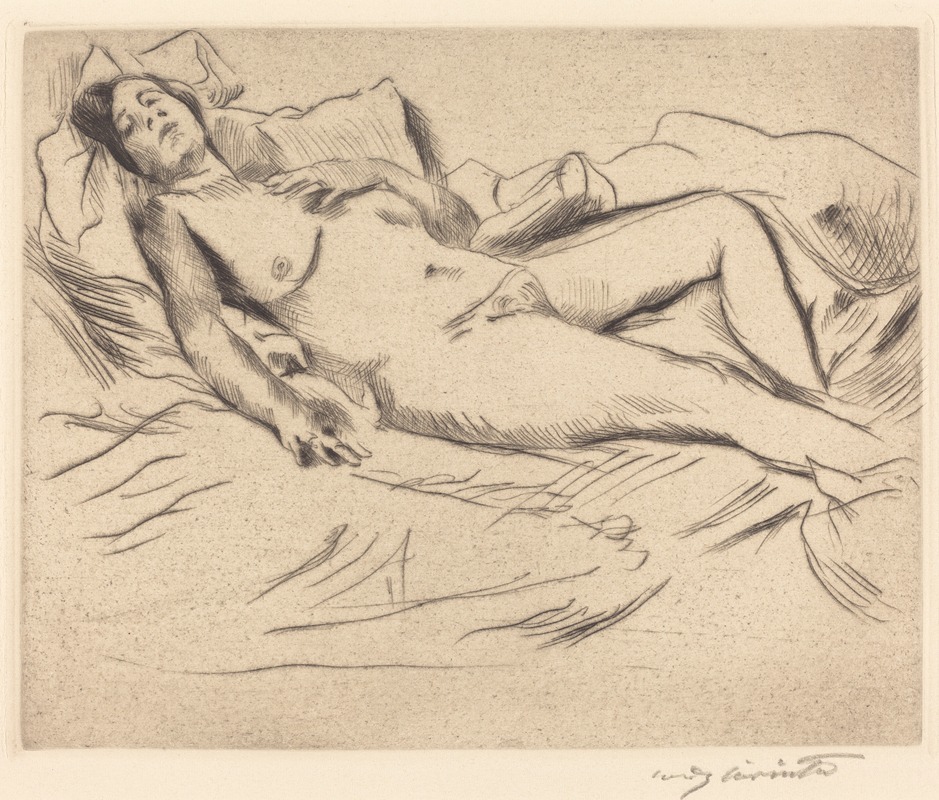
Sleeping Woman
A hand-painted replica of Lovis Corinth’s masterpiece Sleeping Woman, meticulously crafted by professional artists to capture the true essence of the original. Each piece is created with museum-quality canvas and rare mineral pigments, carefully painted by experienced artists with delicate brushstrokes and rich, layered colors to perfectly recreate the texture of the original artwork. Unlike machine-printed reproductions, this hand-painted version brings the painting to life, infused with the artist’s emotions and skill in every stroke. Whether for personal collection or home decoration, it instantly elevates the artistic atmosphere of any space.
Lovis Corinth's painting Sleeping Woman is a work by the renowned German artist, who was a leading figure in the transition from Impressionism to Expressionism in the late 19th and early 20th centuries. Corinth, born in 1858 in Tapiau (now Gvardeysk, Russia), is celebrated for his dynamic and emotionally charged style, which often blended realism with bold, expressive brushwork.
Sleeping Woman depicts a reclining female figure in a state of rest, showcasing Corinth's mastery of capturing human form and emotion. The painting reflects his interest in the intimate and personal aspects of life, a recurring theme in his oeuvre. Corinth was known for his ability to portray the human body with a sense of immediacy and vitality, and this work exemplifies his skill in rendering texture, light, and shadow.
The exact date of creation for Sleeping Woman is not definitively documented, but it is consistent with Corinth's broader body of work, which often explored themes of domesticity, sensuality, and the human condition. The painting is characterized by loose, expressive brushstrokes and a warm, naturalistic palette, hallmarks of Corinth's mature style. These elements suggest that the work may have been created during the early 20th century, a period when the artist was at the height of his creative powers.
Corinth's career underwent a significant transformation following a stroke in 1911, which left him partially paralyzed on his left side. Despite this setback, he continued to paint prolifically, and his later works took on a more introspective and emotional quality. While it is unclear whether Sleeping Woman was created before or after this pivotal event, the painting's serene and contemplative mood aligns with the introspection found in many of his later pieces.
Lovis Corinth's contributions to art have been widely recognized, and his works are held in major collections and museums around the world. Sleeping Woman is an example of his ability to blend technical skill with emotional depth, making it a significant piece within his artistic legacy. However, specific details about the painting's provenance, current location, and historical context remain limited in available records.
This painting exemplifies Corinth's ability to capture the quiet, intimate moments of life, reflecting his broader interest in the complexities of human experience.


















